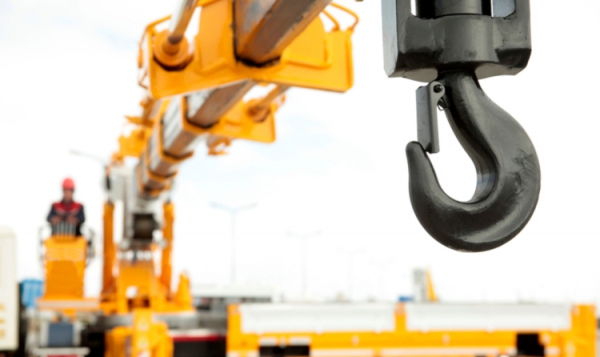In fact, routine maintenance is the easiest way to ensure efficient and safe crane operation.
How do you recognize a crane failure?
The crane failure can be attributed to several reasons and it is very rare that the device registers a mechanical defect without sending earlier warning signals, such as temporary shutdown of the machine. It should also be remembered that overhead cranes may require frequent inspection if they are notoriously used. It is likely that no problems will be detected, even if the equipment is checked in accordance with the Health and Safety standard. This happens when there are not enough inspections. Sometimes a damaged crane can be excluded from the maintenance system simply because it is not included in the inspection contract.
Manufacturer's guidelines and external inspectors - which is more important?
While most manufacturers provide information on the frequency with which each crane component should be checked, many companies have still not developed an appropriate preventative maintenance program based on these guidelines. Sometimes companies assume that they can ensure equipment reliability by maintaining annual inspection, but the fact is that it must comply with the original equipment manufacturer's recommendations and preventative maintenance guidelines. Often, inspection contracts are awarded to those service providers who offer the lowest price, which may prevent companies from getting professional assistance that meets their specific equipment control needs.
How to set a maintenance schedule?
For industrial plants, it is only when the cranes are safe and functional that you can benefit from doing business. By regularly planning inspection and repair tasks and providing professional preventive control, you can not only extend the life of overhead cranes, but also reduce financial losses due to downtime. In fact, routine maintenance is the easiest way to ensure efficient and safe crane operation.
How do you recognize a crane failure?
The crane failure can be attributed to several reasons and it is very rare that the device registers a mechanical defect without sending earlier warning signals, such as temporary shutdown of the machine. It should also be remembered that overhead cranes may require frequent inspection if they are notoriously used. It is likely that no problems will be detected, even if the equipment is checked in accordance with the Health and Safety standard. This happens when there are not enough inspections. Sometimes a damaged crane can be excluded from the maintenance system simply because it is not included in the inspection contract.
Manufacturer's guidelines and external inspectors - which is more important?
While most manufacturers provide information on the frequency with which each crane component should be checked, many companies have still not developed an appropriate preventative maintenance program based on these guidelines. Sometimes companies assume that they can ensure equipment reliability by maintaining annual inspection, but the fact is that it must comply with the original equipment manufacturer's recommendations and preventative maintenance guidelines. Often, inspection contracts are awarded to those service providers who offer the lowest price, which may prevent companies from getting professional assistance that meets their specific equipment control needs.
How to set a maintenance schedule?
In order for the cranes to work at their best all the time, it is necessary to introduce a rational and effective inspection program. It is worth remembering that you cannot use a universal approach when planning inspections. Some cranes are used more often than others and require more attention. When choosing the way of inspection and the company that will do it, you should check whether it can meet the specific needs of the company. By using such a solution, you can extend the life of overhead cranes by several, and sometimes even a dozen or so years, thanks to which such an investment will definitely pay off.
In order for the cranes to work at their best all the time, it is necessary to introduce a rational and effective inspection program. It is worth remembering that you cannot use a universal approach when planning inspections. Some cranes are used more often than others and require more attention. When choosing the way of inspection and the company that will do it, you should check whether it can meet the specific needs of the company. By using such a solution, you can extend the life of overhead cranes by several, and sometimes even a dozen or so years, thanks to which such an investment will definitely pay off.








